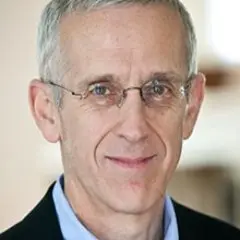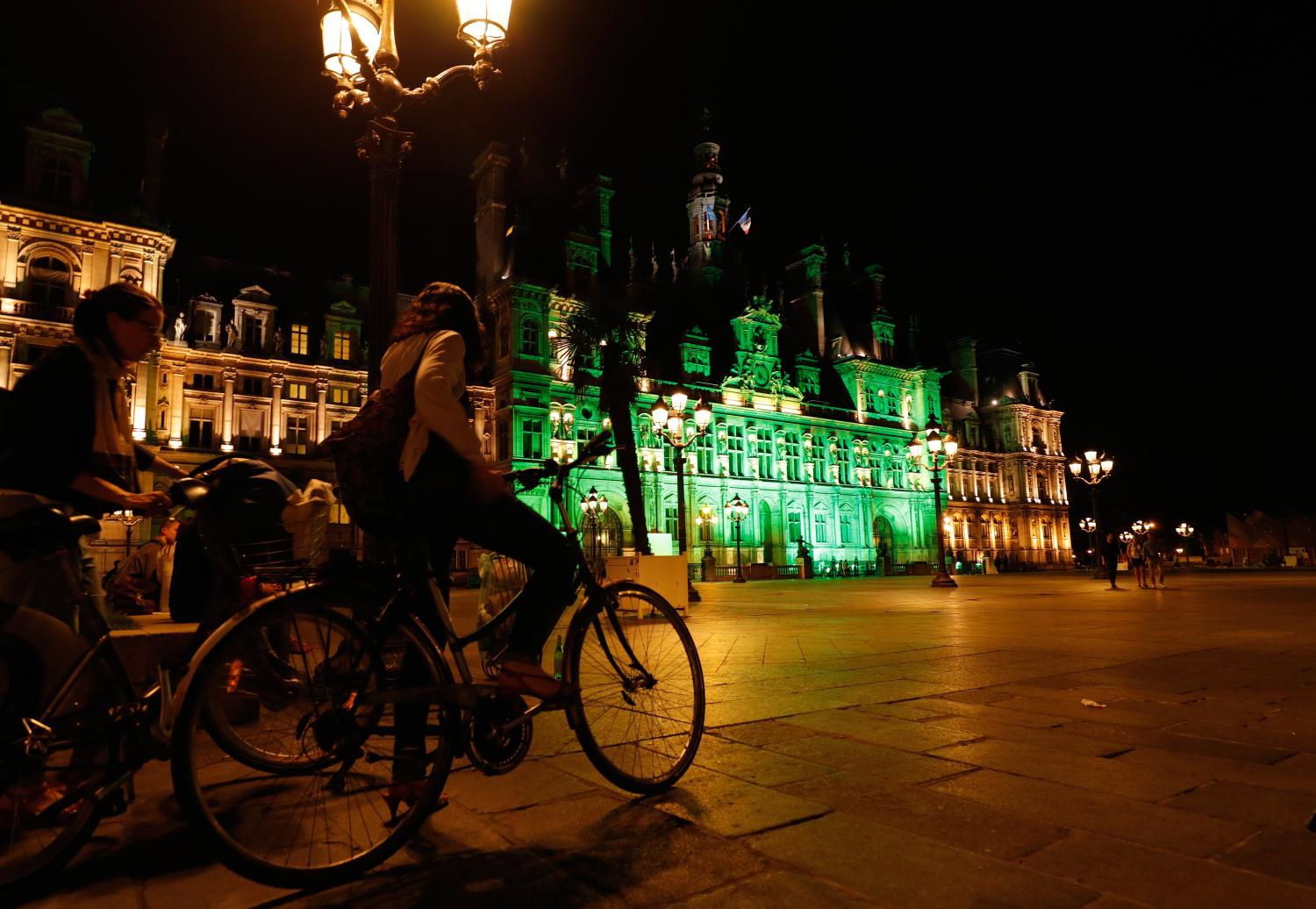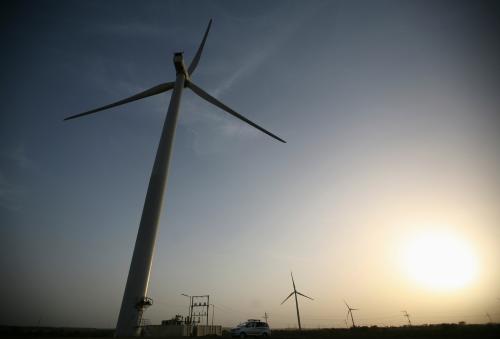This paper is fifth in a series from the Cross-Brookings Initiative on Energy and Climate. The paper’s executive summary follows, and you can view the full series here.
Executive summary
When the nations of the world adopted the Paris Agreement in December 2015, they took a giant step toward establishing an operational regime to spur climate action after some 20 years of failed attempts to do just that.1 This paper focuses on both the paradigm shift in diplomacy that made the success in Paris possible, and the considerable challenges facing the Agreement this year, as Parties struggle to complete the implementing measures needed to get the Paris regime up and running.2
The Paris Agreement succeeded by changing the paradigm of climate diplomacy. It adopted a bottom-up structure for emissions targets (“nationally determined contributions”), balanced by top-down provisions for strong global emission goals and key accountability provisions, such as reporting and review. It shifted the paradigm of differentiation—continuing to assure developing countries that their priorities for growth and development would be fully respected, but putting in place more supple means of differentiating than the 1990s firewall erected between developed and developing countries. It is a legal hybrid, blending binding elements of accountability with non-binding emissions targets. In critical ways, it bets on the force of rising norms and expectations rather than law to achieve its aims. For Paris to succeed in the end, this is the bet that will need to pay off.
The Paris Agreement succeeded by changing the paradigm of climate diplomacy.
Negotiations in 2018, concluding in December at the U.N. climate conference in Katowice, Poland also known as COP24, are focused on the so-called “rulebook”—guidelines and rules on matters such as accounting for emissions, reporting and review, and on the way the new Committee on Implementation and Compliance should operate.3 This rulebook is a key step for turning Paris into an effective regime.
To date, rulebook negotiations have not gone smoothly, though there is time to get them right. The absence of the United States at a political level is problematic, but not the only problem. Many developing countries are worried about how much will be expected of them in areas like reporting and review. Others are seeking, unhelpfully, to re-establish as much of the old firewall as possible. And uncertainty about donor financial contributions creates anxiety.
These rapids can be navigated if countries stay focused on the imperative of building out an effective regime that is faithful to the deal struck in Paris. Developing countries have no need for anxiety. After all, 85 of them already get special, gentler treatment under the Paris Agreement as Least Developed Countries or Small Island Developing States.4 And, for the important transparency regime of reporting on inventories and progress toward targets, “flexibility” is available to any developing country that needs it “in the light of their capacities.”5 Plus, the expert panels that review country reports are already instructed in the Agreement to pay attention to the capabilities and circumstances of developing countries.
In critical ways, it bets on the force of rising norms and expectations rather than law to achieve its aims. For Paris to succeed in the end, this is the bet that will need to pay off.
All Parties need to be sensible about the level of rigor and detail required in these rules. They obviously need to be strong enough to support ambitious action but going overboard will make developing countries feel that the central bottom-up top-down balance is getting lost. The important thing is to get countries all in one effective system and get moving.
The thing we cannot do is go backward toward the old firewall, which is untenable both substantively and politically. That retreat could happen by putting in place different requirements for developed and developing countries. It could also happen by converting the flexibility principle in transparency—limited in the Paris Agreement to developing countries with capacity needs—to one available to all developing countries, irrespective of capacity.
Once again, norms and expectations have a critical role to play. In theory, countries could negotiate hard criteria for deciding who gets flexibility in reporting, but in practice, that is unlikely to work. So, countries will have to be responsible for making their own decisions about whether they can properly claim flexibility, with norms and expectations—and some practical safeguards—keeping the system honest.
Donor countries will also need to reassure developing countries that they are working hard to meet their existing financial commitments. Financial assistance is a perennial source of friction in international climate negotiations, with developed countries struggling to provide more, and developing countries feeling short-changed. The Trump administration’s posture—providing no new funding—only makes things harder.
Paris succeeded as a new kind of climate agreement. The rulebook can help turn it into a strong, lasting regime, provided it stays faithful to the Paris Agreement itself.
Finally, Parties should agree that the rulebook will be open for any needed modifications after a reasonable period of time, perhaps 5 to 10 years after it is finished.
Paris succeeded as a new kind of climate agreement. The rulebook can help turn it into a strong, lasting regime, provided it stays faithful to the Paris Agreement itself.
-
Footnotes
- The Paris outcome included both the Paris Agreement itself and an accompanying decision. Unless otherwise noted, “Paris Agreement” applies to the whole outcome. See United Nations Framework Convention on Climate Change (UNFCCC), Paris Agreement, (December 12, 2016), https://treaties.un.org/doc/Treaties/2016/02/20160215%2006-03%20PM/Ch_XXVII-7-d.pdf.
- “Parties” is used to refer to countries that have ratified the Paris Agreement. See “Paris Agreement – Status of Ratification,” UNFCCC, https://unfccc.int/process/the-paris-agreement/status-of-ratification
- “COP24: Katowice,” Polish Ministry of the Environment, http://cop24.gov.pl/.
- For a list of the Least Developed Countries (47), see “LDC Country Information,” UNFCCC, https://unfccc.int/topics/resilience/workstreams/national-adaptation-programmes-of-action/ldc-country-information and for a list of the Small Island Developing States that are UN members (38), see https://sustainabledevelopment.un.org/topics/sids/list
- UNFCCC, Paris Agreement, Article 13.2.
The Brookings Institution is committed to quality, independence, and impact.
We are supported by a diverse array of funders. In line with our values and policies, each Brookings publication represents the sole views of its author(s).






